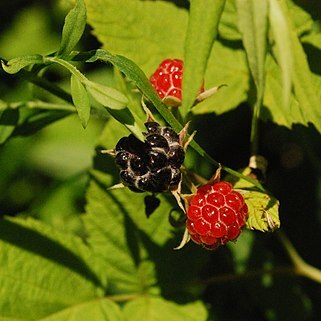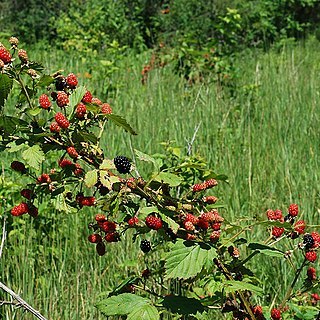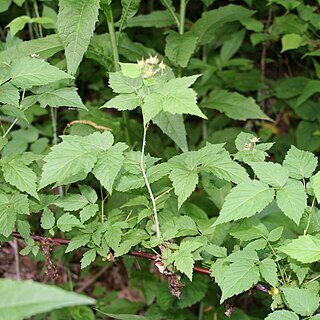Shrubs, 10–30 dm, armed. Stems ?biennial?, erect-arching, sparsely to densely hairy, sparsely to abundantly stipitate-glandular, ?glands usually flattened to cupulate?, not pruinose; prickles sparse to dense, erect or slightly retrorse, stout, 4–10 mm, broad-based. Leaves deciduous, palmately compound, ?not lustrous?; stipules filiform to narrowly lanceolate, (2–)5–15(–20) mm; leaflets (3–)5(–7), terminal ovate to lanceolate, 7–16 × 4–9 cm, base rounded to shallowly cordate, unlobed, margins finely to coarsely serrate or doubly serrate, apex acuminate to long-attenuate, abaxial surfaces with hooked prickles on midveins, moderately hairy, moderately to densely stipitate-glandular on veins. Inflorescences terminal ?on short shoots, sometimes appearing axillary?, (5–)15–25-flowered, racemiform, often elongate. Pedicels unarmed or prickles sparse, hooked, densely hairy, densely short-to long-stipitate-glandular. Flowers bisexual; petals white, obovate to elliptic, rarely suborbiculate, 8–20 mm; filaments filiform; ovaries glabrous or glabrate. Fruits black, globose to cylindric, 1–2 cm; drupelets 20–100, strongly coherent, separating with torus attached. 2n = 14, 21, 28.
A shrub. It grows 3 m high and spreads 1.8 m wide. It loses its leaves during the year. The stems are slender and arching. They have woolly tips. It has sharp hooked prickles. The leaves have 3-5 leaflets and double teeth along the edge. They are furry underneath. The flowers are white and have 5 petals. The fruit are black and cone shaped.



